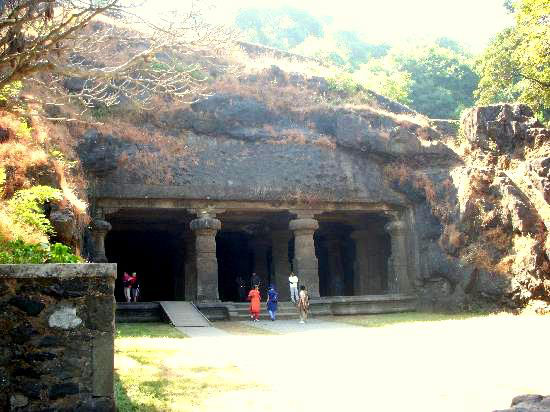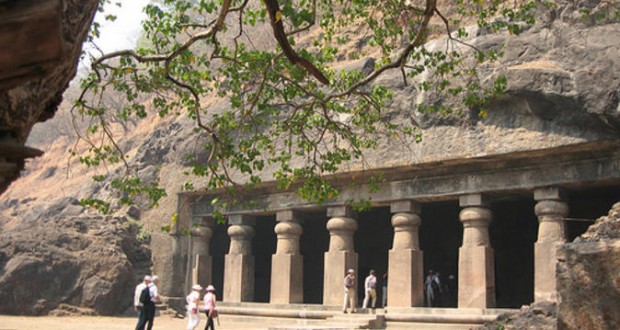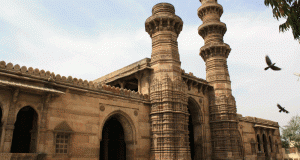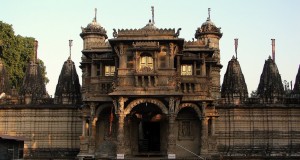This is a good way to occupy a Monday (when most other sights are closed), a Sunday (when the rest of Bombay is closed) or any other day when you need a break from the heat and noise of the city. What you’re going to see are four rock-cut cave temples, dating from AD 450-750, situated on Elephanta Island some 10 km (61/2 miles) north-east of Apollo Bunder. To get there, you’ve a choice of a ‘Big Boat’ (Rs40) or aa ‘Little Boat’ (Rs25), tickets for which are sold from the small office opposite the gateway of India. Take a ‘Big Boat’ they have good guides (all archaeology graduates ) who’ll teach you a lot about Hindu religion, art and thought. Boats leave every hour, between 9 am and 2 pm, and take an hour to reach the island. Elephanta has the longest historical pedigree of any of Bombay’s seven islands. While the others were still boggy marshes, Elephanta was being developed anytime Between the 7th and mid-8th centuries. The extent and quality of the rock-cut architecture and monumental sculpture is well worth the trip over. Much later, the Portuguese landed on the rear side of the island, found a massive stone elephant there (presently housed in bombay’s Victoria Gardens) and renamed it Elephanta. later , as disenchantment set in, bored Portuguese gunners spent long, hot monsoon months using its beautiful cave temples for target practice.
The caves themselves are a testimony to the faith of those who excavated them. Some contain 7.7-m high friezes of astonishing workmanship and figurative detail. e quality, despite cannon-damage and loss of much of the original (beautiful) paintwork, i s quite as fine as that of the more popular caves at Ellora. Arriving at the island, it’s a gentle climb up 125 sloping steps to the main cave, dedicated to Shiva. On the ascent, keep an eye out for acquisitive monkeys (don’t display any food or bright jewellery). There are palanquins available for those who don’t like exercise. At the top, pay your admission and follow the guide directly into the caves for his/her excellent half-hour lecture.
s quite as fine as that of the more popular caves at Ellora. Arriving at the island, it’s a gentle climb up 125 sloping steps to the main cave, dedicated to Shiva. On the ascent, keep an eye out for acquisitive monkeys (don’t display any food or bright jewellery). There are palanquins available for those who don’t like exercise. At the top, pay your admission and follow the guide directly into the caves for his/her excellent half-hour lecture.
The main cave, carved out of the hard, durable blackstone around the middle of the 7th century AD, comprises a pillared hall and a small shrine (this has four entrance doors, flanked by dvarapala guardians). The architectural style is a combination of Chalukyan (cushion capitals and graceful sculptures) and Gupta (mountain, cloud, nature imagery) influences. The cave itself features a series of large sculptured panels, the finest of which, the 5.8-m high Trimurti monolith, depicts Shiva in a rare role as creator, protector and destroyer combined: Mahesamurti , or portrayal of the Hindu Trinity. He is shown first as a young man/Brahma/creator, holding lotus blossom (gentle, feminine face on right), then as a middle-aged man/Vishnu/preserver (wise, mature central face, wearing enigmatic smile comparable to that of the Mona Lisa), and finally as a wizened, ferocious old man (left panel), representing Shiva himself as destroyer, holding a skull. It’s an exquisitely balanced piece of work. Nearby is one of the finest sculptures in India—Ravana lifting Mount Kailash. This tells the epic story of the Lankan king, Ravana—often shown with 10 heads to denote superior intelligence—who took advantage of Shiva’s deep slumber to try to displace his mountain home. But then Shiva woke up and, with just the gentle pressure of his toe, pressed the teetering peak back into place again, burying the demon king beneath it for 10 000 years. Such is the skill of the sculptor here, that you can actually see the strain on Ravana’s rippling shoulder and back muscles.
To the left of the Trimurti is another masterstroke—Shiva as Ardhanarisvara, or half-man half-woman. This is a representation of the combined force of masculine spirit and feminine creativity. Viewed from the centre, the bisexuality of the figure’s form and features appears quite harmonious: a remarkable achievement. The ‘female’ face is looking into the mirror of maya or illusion. Other important panels show Shiva playing chess with Parvati on Mount Kailash, surrounded by awed domestic servants; performing the earth-shaking Tandava dance (Nataraja); and demonstrating the discipline of yoga ( Yogisvara).





